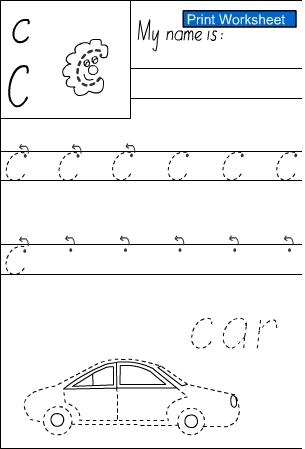Letter c -Handwriting Sheet (letter c)
- Grade: Kinder
Activity type: Printable
To save results or sets tasks for your students you need to be logged in. Join Now, Free
Letter c -Handwriting Sheet (letter c)
- Course
English - Grade
Kinder - Section
Handwriting Worksheets - Outcome
Grade K - Activity Type
Printable - Activity ID
4675

